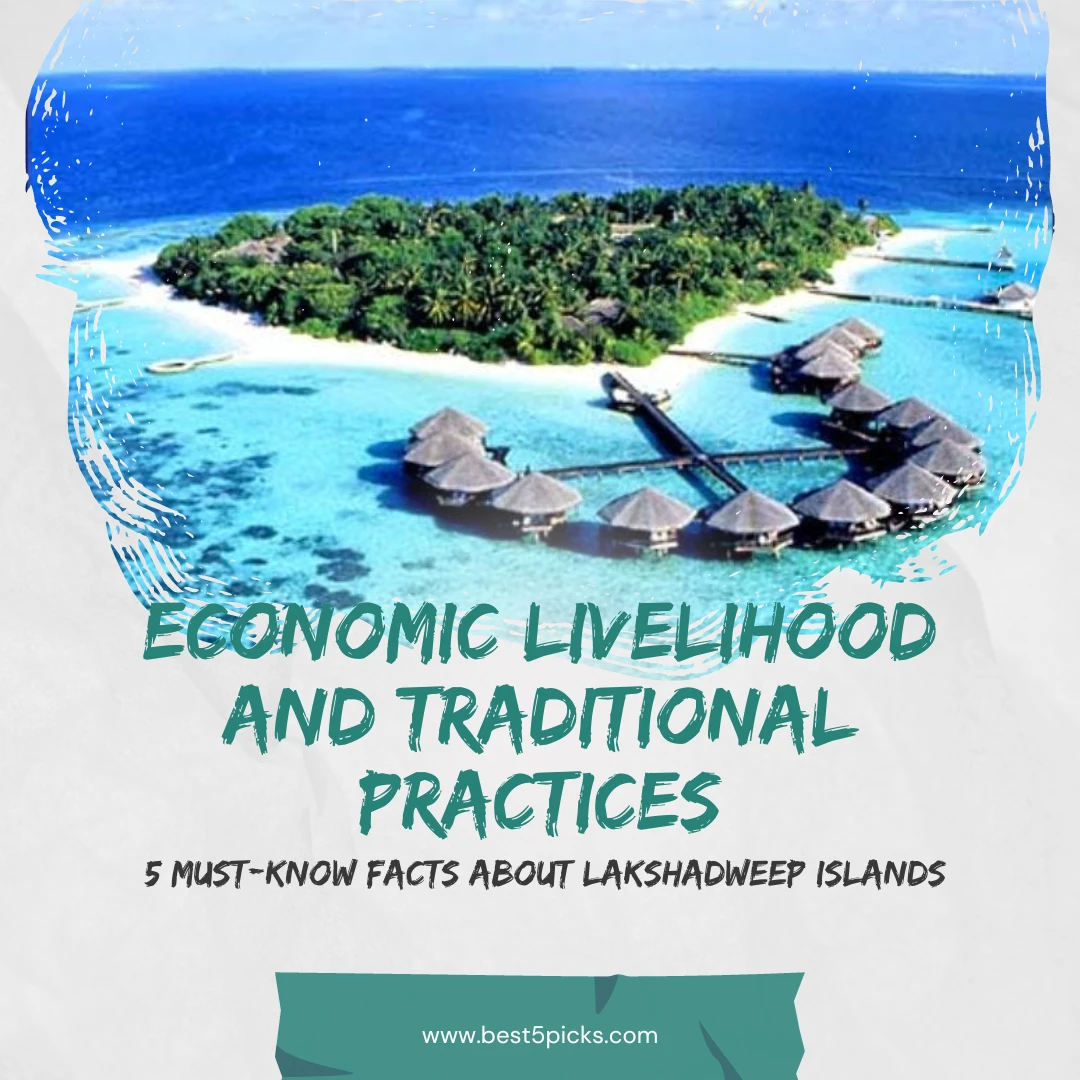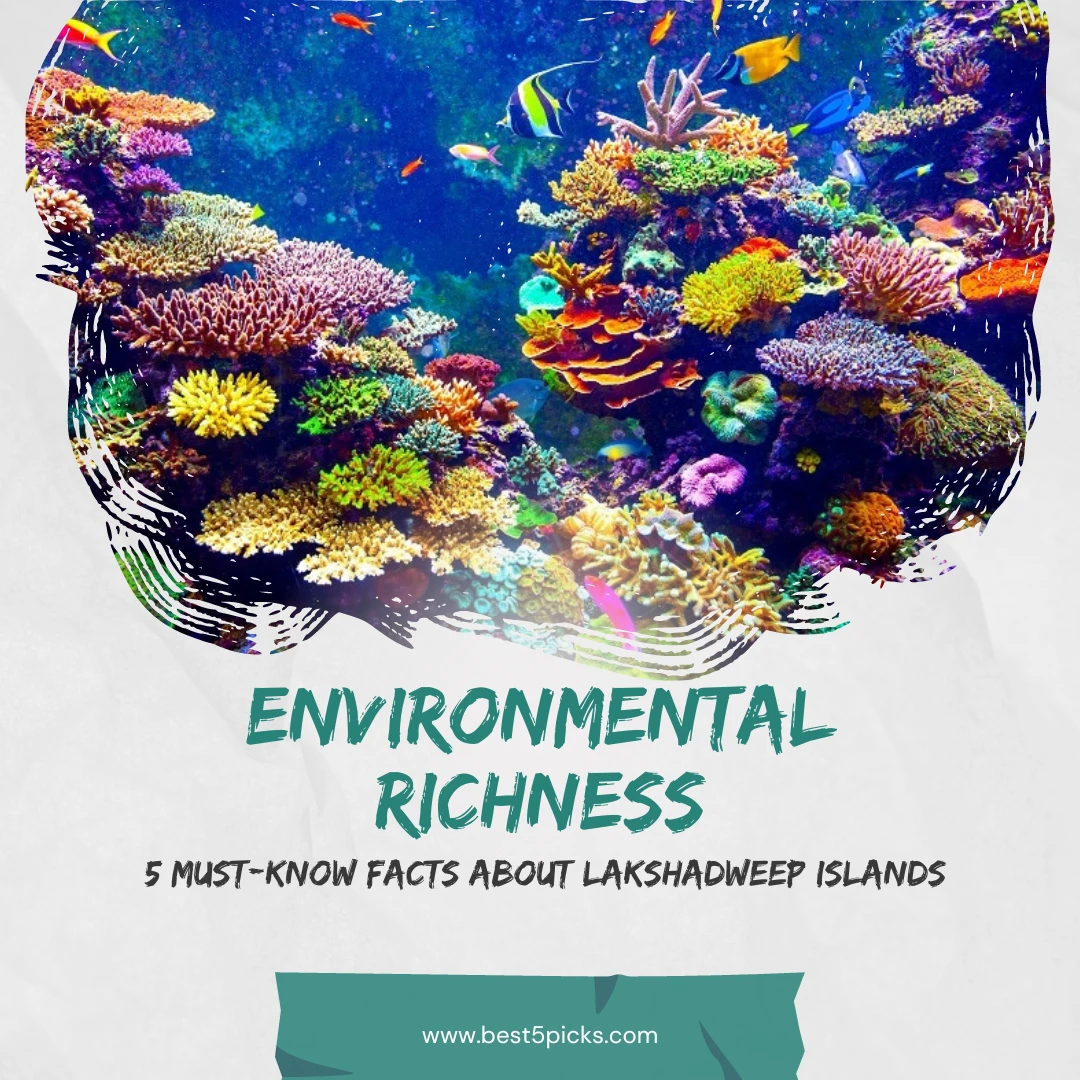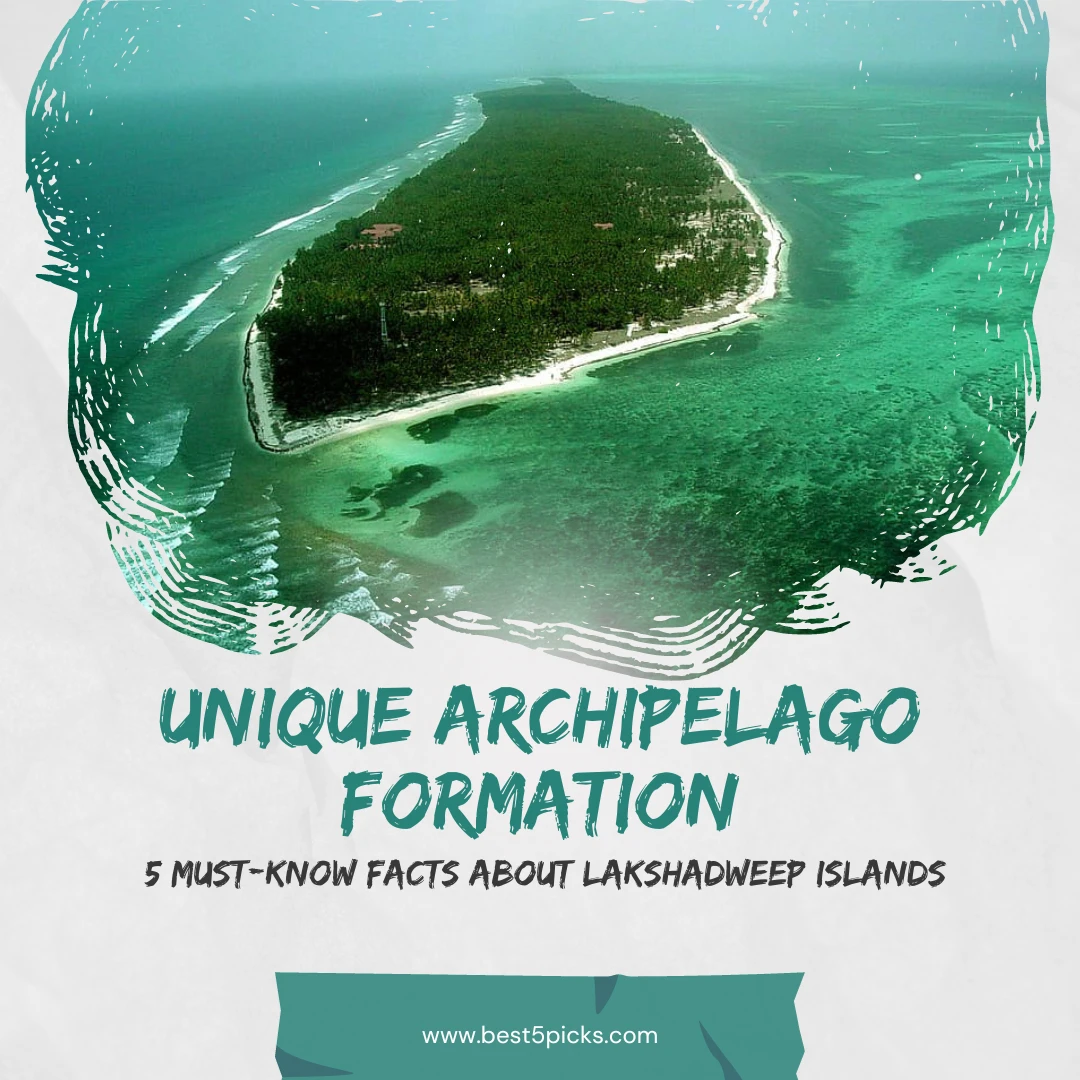Explore the enchanting realm of the Lakshadweep Islands with our insightful guide, “5 Must-Know Facts About Lakshadweep Islands.”
In this comprehensive article, uncover the fascinating features that make these islands a hidden gem in the Indian Ocean.
From pristine coral reefs to unique cultural nuances, this piece delves into the lesser-known aspects that define the allure of Lakshadweep.
Discover the rich marine biodiversity, vibrant local traditions, and the blend of tranquility and adventure that characterize the Lakshadweep Islands.
Whether you’re a travel enthusiast or simply curious about this idyllic archipelago, our compilation of must-know facts ensures you gain a deeper understanding of the beauty and diversity that await you in the Lakshadweep Islands.
I. Introduction
Lakshadweep Islands, an enchanting archipelago in the Arabian Sea, captivate with their pristine beaches, vibrant coral reefs, and unique cultural heritage, forming a tropical paradise off the southwestern coast of India.
A. Brief Overview of Lakshadweep Islands
The Lakshadweep Islands, also known as Laccadive Islands, form a captivating archipelago nestled in the Arabian Sea.
Situated off the southwestern coast of India, this group of islands is renowned for its stunning coral reefs, pristine beaches, and unique cultural heritage.
Comprising 36 atolls and coral reefs, Lakshadweep is a tropical paradise that beckons travelers seeking tranquility and natural beauty.
B. Geographical Location in the Arabian Sea
Lakshadweep is strategically located in the Arabian Sea, to the southwest of the Indian subcontinent.
The islands span approximately 400 kilometers, positioned between 8° and 12° 30′ N latitude and 71° and 74° E longitude.
This idyllic location contributes to the islands’ rich biodiversity and offers a picturesque backdrop of azure waters, making Lakshadweep a destination that seamlessly blends geographical allure with cultural charm.
5. Lakshadweep Economic Livelihood and Traditional Practices

5.1 Description of the Primary Sources of Income (Fishing, Coconut Cultivation)
The economic livelihood of Lakshadweep is intricately woven with its natural resources, with fishing and coconut cultivation emerging as primary sources of income for the islanders.
Fishing, both traditional and commercial, plays a pivotal role in the economy, providing sustenance and livelihoods to a significant portion of the population.
The rich marine biodiversity surrounding the islands ensures a thriving fishing industry, contributing not only to local consumption but also to trade with mainland markets.
Coconut cultivation is another cornerstone of the economy, with coconut palms gracing the landscape of the islands.
Islanders engage in the cultivation of coconuts for various purposes, including the production of coconut oil, copra, and traditional handicrafts.
The coconut industry not only serves as an economic driver but also reflects the islands’ dependence on sustainable practices, as coconut palms are well-adapted to the local ecology and contribute to the overall environmental balance.
5.2 Highlighting Traditional Crafts and Cultural Practices Supporting Livelihoods
Lakshadweep preserves its cultural heritage through traditional crafts and practices that are not only a source of income but also integral to the identity of the island communities.
Handicrafts such as coir weaving, shell crafts, and traditional boat building are deeply rooted in the cultural fabric of Lakshadweep. These crafts are often passed down through generations, representing a continuity of skills and cultural identity.
Cultural practices, including traditional dance forms and music, also play a role in supporting livelihoods through cultural tourism.
The promotion of these traditional arts not only adds to the economic vitality of the islands but also fosters a sense of pride and preservation of Lakshadweep’s unique cultural heritage.
Thus, the economic landscape is not only shaped by modern industries but also sustained by the rich tapestry of traditional practices that have been an integral part of life in Lakshadweep for centuries.
4. Lakshadweep Sustainable Practices and Conservation Efforts

4.1 Overview of Sustainable Practices in Waste Management and Eco-friendly Initiatives
Lakshadweep Islands stand out for their commitment to sustainable practices and eco-friendly initiatives.
The waste management system on the islands prioritizes environmental preservation, with a focus on waste reduction, recycling, and responsible disposal.
Residents and authorities actively engage in awareness campaigns to promote sustainable living, emphasizing the importance of reducing plastic usage and adopting eco-friendly alternatives.
These efforts contribute to the preservation of the pristine landscapes and the fragile marine ecosystem that defines Lakshadweep.
Additionally, eco-friendly initiatives, such as the promotion of renewable energy sources and sustainable tourism practices, underscore the islands’ dedication to minimizing their ecological footprint.
The implementation of these initiatives reflects a conscientious approach towards maintaining the delicate balance between human activities and the preservation of the archipelago’s natural beauty.
4.2 Mention of Conservation Efforts for Endangered Species and Habitats
Lakshadweep is committed to the conservation of endangered species and their habitats.
Efforts are underway to protect and rehabilitate vulnerable marine species, including sea turtles and various coral species, which are essential components of the island’s biodiversity.
Conservation programs involve monitoring and research activities to understand and mitigate the impacts of climate change and human activities on these delicate ecosystems.
The establishment of marine protected areas and strict regulations for fishing practices contribute to the conservation of critical habitats, ensuring the sustainable management of marine resources.
Collaborative initiatives with environmental organizations and local communities further reinforce Lakshadweep’s dedication to the preservation of its unique flora and fauna, making it a model for sustainable conservation practices in island ecosystems.
3. Lakshadweep Environmental Richness

3.1 Description of the Rich Marine Biodiversity
Lakshadweep is a haven for marine biodiversity, boasting an extraordinary array of aquatic life within its pristine waters.
The coral reefs surrounding the islands are teeming with a diverse range of vibrant and exotic marine species, including colorful coral formations, tropical fish, and other marine invertebrates.
The crystal-clear waters of the lagoons and coral atolls provide a conducive environment for the flourishing marine ecosystem, making Lakshadweep a captivating destination for nature enthusiasts and marine biologists alike.
3.2 Highlighting the Importance of the Islands as a Biosphere Reserve
Recognizing the ecological significance of its unique environment, Lakshadweep has been designated as a biosphere reserve.
This designation underscores the islands’ commitment to preserving and protecting their natural resources and biodiversity.
The biosphere reserve status acknowledges the delicate balance maintained between human habitation and environmental conservation on the islands.
Lakshadweep’s commitment to sustainable practices and the protection of its fragile ecosystem reinforces its role as a crucial biosphere reserve, contributing to global efforts to safeguard biodiversity and mitigate the impacts of climate change in vulnerable coastal regions.
2. Lakshadweep Cultural Diversity

2.1 Discussion on the Diverse Cultural Heritage
Lakshadweep boasts a rich tapestry of cultural diversity, influenced by centuries of maritime trade, historical interactions, and the unique blend of indigenous traditions.
The cultural heritage of the islands reflects a harmonious fusion of Arabian, Indian, and indigenous influences, creating a vibrant and distinct identity.
The cultural landscape is characterized by traditional art forms, folk dances, music, and religious practices that have been passed down through generations, contributing to the unique charm of Lakshadweep.
2.2 Mention of the Predominant Culture and Languages Spoken
The predominant culture in Lakshadweep is deeply rooted in Islamic traditions, owing to historical connections with Arab traders and seafarers.
The influence of Islam is evident in the architecture, cuisine, and daily life of the islanders. The inhabitants, predominantly of Malabar origin, follow a lifestyle shaped by the Islamic way of living.
In terms of languages, Malayalam is the most widely spoken language in Lakshadweep, reflecting its proximity to the Indian state of Kerala.
Malayalam serves as the lingua franca, facilitating communication among the diverse communities inhabiting the islands.
Additionally, the islands have a unique local language known as Jeseri, spoken by a section of the population, adding to the linguistic diversity that enriches the cultural fabric of Lakshadweep.
This amalgamation of cultures and languages contributes to the vibrant and inclusive ethos of the archipelago.
1. Lakshadweep Unique Archipelago Formation

1.1 Description of the Archipelago Comprising 36 Islands
Lakshadweep stands as a distinctive archipelago, consisting of a total of 36 islands.
These islands are dispersed across the vast expanse of the Arabian Sea, each contributing to the overall charm of this tropical paradise.
The archipelago is categorized into three major groups: Amindivi, Laccadive, and the uninhabited Pitti Bank.
Among these, Amindivi and Laccadive groups are further subdivided into smaller clusters, forming a diverse and interconnected network of islands.
1.2 Highlighting the Coral Atolls and Their Formation
One of the remarkable features of Lakshadweep’s archipelago is the prevalence of coral atolls.
These atolls are circular or oval-shaped coral reefs that encircle a lagoon. The islands of Lakshadweep are predominantly coral atolls, showcasing a unique geological formation.
The atolls are formed over time through the accumulation and growth of coral organisms, creating a delicate yet robust ecosystem.
The coral atolls not only contribute to the breathtaking aesthetics of the islands but also play a crucial role in supporting the rich marine biodiversity that thrives in the surrounding waters.
The intricate process of atoll formation adds a layer of ecological significance to the beauty of Lakshadweep, making it a truly distinctive and environmentally significant archipelago.
II. Conclusion
In conclusion, the Lakshadweep Islands stand as an enchanting archipelago, characterized by a unique blend of natural beauty, cultural diversity, and environmental richness.
From the 36 coral atolls forming this tropical paradise to the vibrant marine biodiversity that thrives in its crystal-clear waters, Lakshadweep captivates with its unparalleled charm.
The islands’ cultural tapestry, influenced by centuries of maritime trade and Islamic traditions, adds a distinctive flavor to the archipelago, while sustainable practices and conservation efforts underscore the commitment to preserving this natural haven.
A. Emphasis on the Importance of Preserving this Natural Paradise through Sustainable Practices and Cultural Conservation
As we marvel at the allure of Lakshadweep, it becomes imperative to recognize the responsibility we share in preserving this ecological and cultural gem.
The delicate balance between economic livelihoods and environmental conservation, anchored by sustainable practices, exemplifies the islands’ commitment to ensuring the longevity of their unique ecosystem.
Cultural conservation, safeguarding traditional crafts and practices, further reinforces the need to cherish and protect the rich heritage that defines Lakshadweep.
In an era where environmental consciousness is paramount, Lakshadweep serves as a beacon, illustrating how a harmonious coexistence between humans and nature is not only achievable but essential for the well-being of our planet.
By embracing sustainable practices and valuing cultural conservation, we can contribute to the longevity of this natural paradise, allowing future generations to continue to be mesmerized by the beauty and diversity that Lakshadweep graciously offers.
III. Quick Recap of 5 Must-Know Facts About Lakshadweep Islands
- Unique Archipelago Formation
- Cultural Diversity
- Environmental Richness
- Sustainable Practices and Conservation Efforts
- Economic Livelihood and Traditional Practices
Unveiling Lakshadweep’s Secrets! Dive into paradise with these 5 jaw-dropping facts. Your ultimate guide to the exotic Lakshadweep Islands.
IV. Frequently Asked Questions (FAQ)
Where are the Lakshadweep Islands located?
The Lakshadweep Islands are situated in the Arabian Sea, off the southwestern coast of India.
How many islands make up the Lakshadweep group?
There are a total of 36 islands in the Lakshadweep archipelago.
What is unique about the formation of these islands?
These islands are primarily coral atolls, formed due to coral reef growth on a submerged volcanic mountain range.
What languages are spoken in Lakshadweep?
The predominant language is Malayalam. However, dialects like Jeseri and Mahl are also spoken.
What makes Lakshadweep a significant tourist destination?
The islands are renowned for their stunning coral reefs, clear waters, and rich marine life, making them an excellent spot for snorkeling and diving enthusiasts.
Is there any restriction on visiting Lakshadweep?
Yes, visitors require a permit issued by the Lakshadweep administration. These permits are obtainable through authorized travel agents.
How is Lakshadweep contributing to environmental conservation?
The islands are committed to renewable energy, particularly solar power, and also house a biosphere reserve to protect its diverse ecosystem.
What are the main sources of income for the people of Lakshadweep?
Fishing and coconut cultivation are the primary sources of livelihood for the locals.
Are there specific cultural festivals celebrated on the islands?
Yes, various festivals like Id-Ul-Fitr, Bakrid, and the Lakshadweep Tourism Festival are celebrated with fervor, showcasing the cultural diversity of the region.
Are there accommodation options available for tourists?
Yes, there are resorts and hotels available on a few islands, providing accommodation facilities for tourists visiting Lakshadweep.










